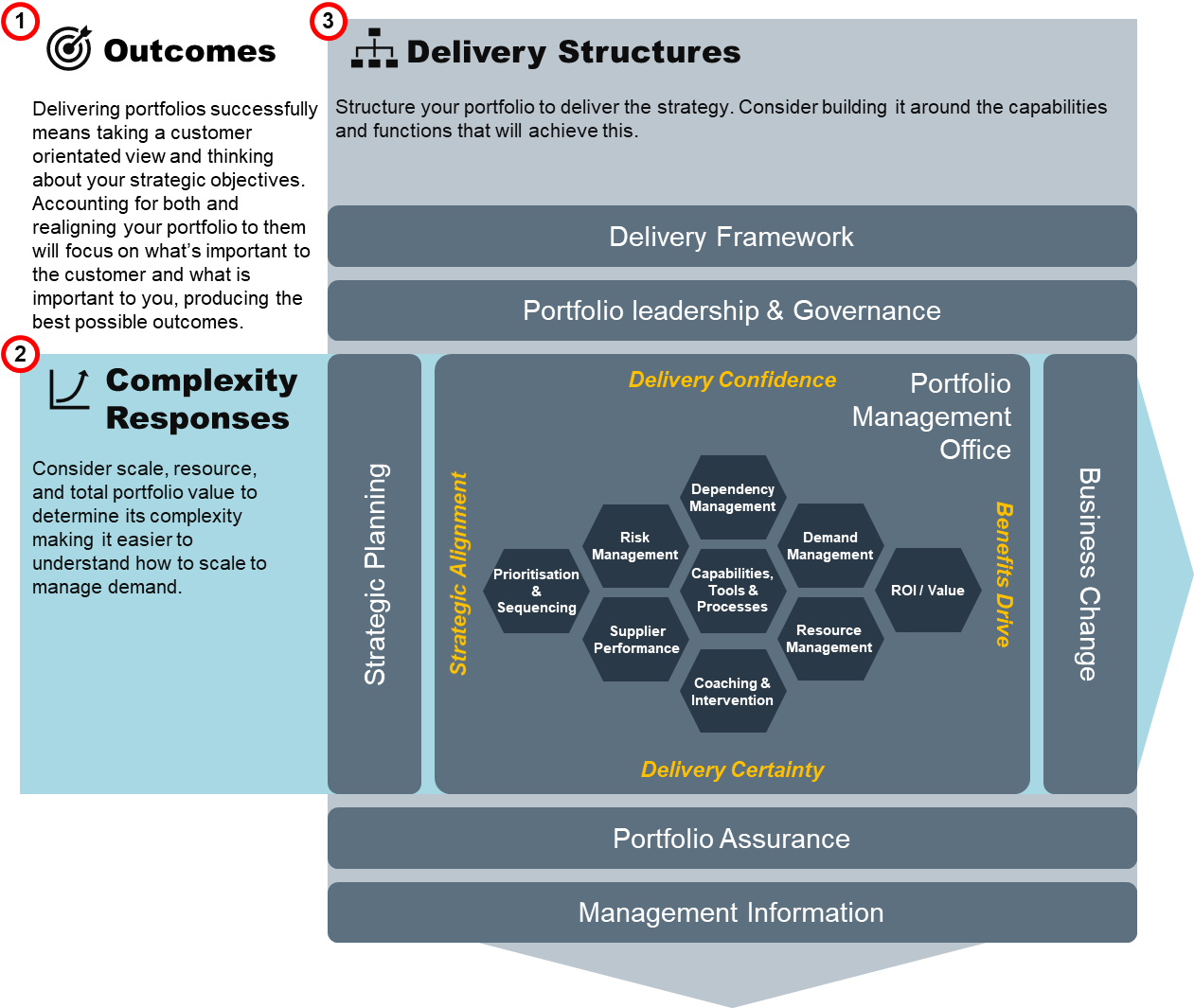
Strategic portfolio management in defence: The key to responding to emerging threats
Tags
The UK’s Integrated Review of Security, Defence, Development and Foreign Policy outlines the need for greater integration to make more of finite resources. It argues that integration is the answer to the disturbing new threats humans and climate change are creating.
While we agree integration is the right goal, the skill, experience, and tools to deliver integration won’t be easy to develop. So, the defence industry needs to look at how to support better integration – it needs to embrace strategic portfolio management.
Strategic portfolio management is about deciding where best to focus finite resources to meet strategic objectives. In other words, it’s about deciding how to do the right things. Organisations find it hard to apply strategic portfolio management to ‘in-flight’ portfolios, so often miss the full benefits of greater integration and doing more with less.
Senior Responsible Owners (SROs) can better address the integration needed for both new threats and climate change responses by improving strategic portfolio management ‘in-flight’. To do this, they must work with their support teams to focus on outcomes, complexity responses, and delivery structures.

Figure 1: The Portfolio Management Framework optimises outcomes by integrating complexity responses with delivery structures.
Outcomes
The successful delivery of portfolios, be they for defence related threats or for accelerating portfolio innovation for rail services, relies on identifying what the focus of the portfolio should be. To do this, it’s critical to take customer orientated views and to build on your organisation’s strategic objectives. Accounting for both and visibly aligning your portfolio to them will allow you to concentrate on what’s important to customers, and what’s important to you.
To help, start with the end goal of what you want to achieve and consider what the outputs/outcomes should be to achieve them, and how aligned the portfolio is to that goal. Then, concentrate on developing authentic behaviours and leadership that will continually reinforce portfolio alignment to those goals and customer needs.
From time to time, there may be changes in customer needs and wider organisational priorities, so it’s important to continually revisit customer needs and strategic objectives to ensure your portfolio remains aligned to both.
Complexity responses
It’s important to understand the complexity of your portfolio. To do this, you should consider its scale, the resources it requires, its total value and its anticipated benefits. Quantifying these will enable you to determine how complex your portfolio is. You might find your portfolio has numerous high-value projects and programmes at high risk with significant dependencies, or that you have a simpler portfolio where there’s a reduced scale of work at lower risk.
Characterising your portfolio against a set of complexity dimensions makes it easier to understand how to scale sufficiently to manage demand. For example, you’ll be able to assess whether the portfolio team has adequate knowledge and skills to scale sufficiently, or if they need training to address deficiencies. It will also help you plan any changes to minimise disruption – scaling requires robust change management to help communication and implementation.
Delivery structures
Once you’ve aligned your portfolio to organisational objectives and understood its complexity, focus on how to structure, and deliver it. For instance, is the portfolio functionally managed, matrix managed, or a hybrid? Most important is to ensure you set it up correctly to deliver. If your portfolio is overly siloed and disjointed, consider restructuring it around capabilities and services that will provide better integration of resources and clarity on responsibilities.
You should also consider build, borrow or buy options – you might want to build internal capability while buying support during peaks of activity. And that might mean your core portfolio structure having to adapt to an alternative delivery model when accounting for changes in demand.
Setting up the right delivery and management structures might not require wholesale restructuring. It’s helpful to consider what’s currently working within the portfolio, as keeping useful, value-adding aspects are just as important as introducing new ones.
Understand portfolio focus and complexity to improve delivery
To pivot portfolios in the face of emerging threats and the climate change imperatives, it’s important to address the outcomes, complexity responses, and delivery structures. These are the foundations that underpin successful portfolios and the ability to control in-flight projects and programmes. A relentless focus on these activities will enable SROs, programme directors and leaders to drive continuous improvement, achieve more efficient and effective outcomes for customers, and give better value for money for taxpayers.
Explore more









